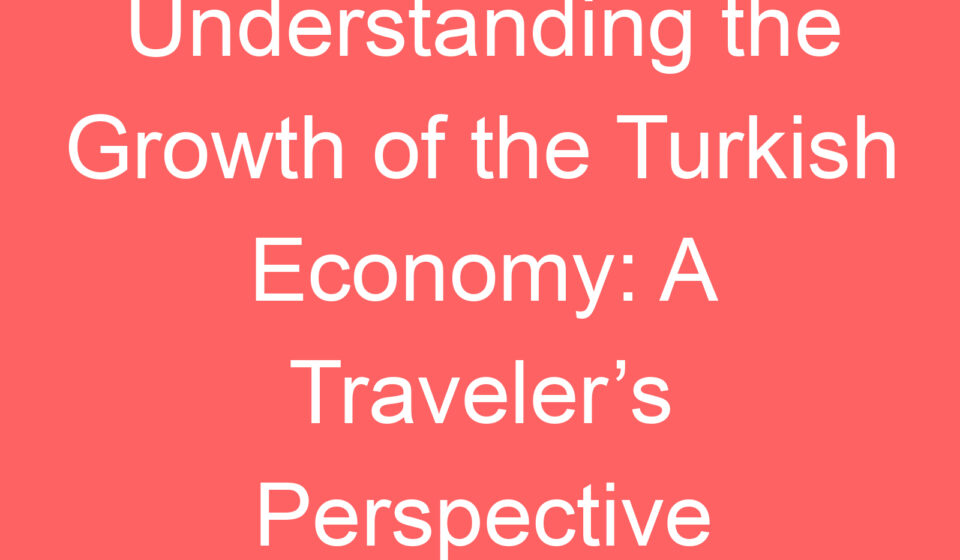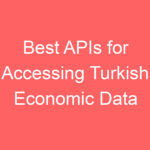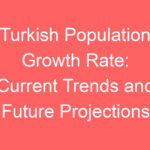
Understanding the Growth of the Turkish Economy: A Traveler’s Perspective
Turkey is not only a country of breathtaking landscapes, rich history, and vibrant culture—it is also a nation with one of the most dynamic economies in the region. For tourists, understanding the country’s economic growth adds an extra layer of appreciation to their travels, as it influences everything from infrastructure and services to the cost of living and local experiences. By exploring the nation’s growth story, travelers gain a window into how Turkey has transformed itself and what it means for those who visit today.
Table Of Content
- A Snapshot of Turkey’s Economic Growth
- Key Drivers of the Economy
- 1. Industry and Manufacturing
- 2. Construction and Domestic Demand
- 3. Exports and Trade Links
- 4. Tourism as a Growth Engine
- 5. Agriculture and Food Exports
- Challenges Behind the Growth
- Broader Perspectives on Growth
- Political & Institutional Factors
- Social Impacts
- Environmental Concerns
- Geopolitical Influences
- Risk and Resilience
- What This Means for Tourists
- Final Thoughts
- Related Posts
A Snapshot of Turkey’s Economic Growth
Over the past two decades, Turkey has experienced robust but sometimes volatile economic growth. While its average annual growth rate has hovered around 4–5%, recent years highlight both surges and slowdowns:
- 📈 2023: Growth surged around 5%, driven by post-pandemic recovery and strong domestic demand.
- 📊 2024: Growth slowed to about 3.2% as inflation pressures and tighter monetary policies took hold.
- 🔮 2025 (forecast): Global institutions such as the IMF and EBRD project around 3% growth, suggesting stability but not rapid acceleration.
This performance demonstrates that Turkey is steadily balancing its ambitious growth model with the realities of economic management. Visitors often see the visible outcomes of this expansion—from gleaming airports to high-speed railways and modern shopping centers.
Key Drivers of the Economy
1. Industry and Manufacturing
🏭 Turkey has positioned itself as a regional hub for manufacturing and exports, taking advantage of its strategic location between Europe and Asia. International companies are relocating production facilities to Turkey due to nearshoring trends, creating a diverse industrial base. For travelers, this explains why Turkish textiles, electronics, and automotive products are widely available and competitively priced.
2. Construction and Domestic Demand
🏗️ From new residential complexes to grand infrastructure projects, construction has become one of the most visible signs of economic growth. Tourists can witness this boom in modern skylines, recently built bridges, and the impressive new Istanbul Airport—one of the largest in the world. Earthquake reconstruction efforts also channel large amounts of investment into building safer, more resilient cities.
3. Exports and Trade Links
🌍 Turkey’s economic ties with Europe, the Middle East, and Asia make it a trading powerhouse. These links create a blend of cultures that visitors notice in Turkish cuisine, fashion, and technology. Tourists experience this global integration directly when they see European-style cafés next to traditional tea houses or when shopping for both international and local brands.
4. Tourism as a Growth Engine
✈️ Tourism is a cornerstone of the Turkish economy. Millions of travelers arrive each year, making the sector one of the largest sources of revenue and employment. Beyond the historical landmarks, this growth encourages new hospitality services, eco-tourism ventures, and cultural festivals that directly enrich the tourist experience.
5. Agriculture and Food Exports
🍇 Although less visible in cities, agriculture remains a vital part of the economy. Turkey is a leading exporter of hazelnuts, figs, cherries, and olives. Travelers benefit from this abundance through fresh, seasonal foods that make Turkish cuisine so memorable.
Challenges Behind the Growth
Despite successes, Turkey faces several challenges that shape both local life and visitor experiences:
- 💸 Inflation: Persistent high inflation affects daily prices. Tourists may notice that restaurant menus or transportation fares fluctuate over short periods.
- 💱 Currency Volatility: The Turkish lira often experiences rapid changes, which can make travel surprisingly affordable for foreigners but uncertain for locals.
- 🗺️ Regional Disparities: Major cities like Istanbul, Ankara, and Izmir showcase modern development, while rural or eastern provinces can feel less developed, offering a more authentic but less polished experience.
- ⚡ Energy Dependence: Reliance on imported energy resources makes the economy vulnerable to global price shocks, indirectly influencing local prices for transport and utilities.
Broader Perspectives on Growth
Political & Institutional Factors
🏛️ Policy shifts, institutional reforms, and political decisions strongly influence economic conditions. For tourists, these factors may shape infrastructure quality, visa processes, or even the stability of travel plans.
Social Impacts
🤝 Economic growth has not been evenly shared. Visitors often notice contrasts such as luxury malls near traditional bazaars, or cosmopolitan neighborhoods existing alongside more modest communities. These differences highlight Turkey’s rapid modernization alongside deeply rooted traditions.
Environmental Concerns
🌱 Rapid construction and industrial growth have raised environmental issues such as air pollution and increased carbon emissions. Yet Turkey is also investing in renewable energy, eco-tourism, and sustainable practices. Travelers can find eco-friendly hotels, organic farms, and nature-focused tours that reflect this balancing act.
Geopolitical Influences
🕊️ Located at the crossroads of Europe and Asia, Turkey is deeply affected by international trade, regional politics, and migration flows. For tourists, this unique position translates into cultural richness—felt in food, architecture, music, and daily life—that few countries can match.
Risk and Resilience
🛡️ Turkey’s ability to adapt to shocks—such as global recessions, natural disasters, or sudden currency fluctuations—shapes how resilient its growth truly is. Tourists traveling during times of instability may find that while costs fall, locals experience greater hardship.
What This Means for Tourists
- 💵 Affordable Travel: Because of currency movements, Turkey often provides excellent value. Visitors can enjoy luxury hotels, fine dining, and guided tours for far less than in Western Europe.
- 🚆 Improved Infrastructure: Highways, airports, metro systems, and digital connectivity make traveling easier and more efficient than in the past.
- 🛍️ Shopping Diversity: From age-old bazaars filled with handmade crafts to international shopping malls, economic vibrancy fuels a wide range of retail experiences.
- 🎭 Cultural Exchange: As Turkey grows, it embraces both tradition and globalization. Tourists feel this blend when eating street simit in the morning and enjoying a contemporary art gallery by night.
- 🏞️ Regional Choices: Growth highlights contrasts across regions—tourists can explore both bustling, modern Istanbul and untouched villages in Anatolia, gaining a fuller sense of Turkey’s diversity.
Final Thoughts
For travelers, Turkey’s economic growth is not just a statistic—it shapes everything from the transport you take to the meals you eat and the interactions you have with locals. Modern conveniences coexist with deep traditions, making Turkey an extraordinary destination that is both affordable and enriching. By understanding how the economy has evolved, visitors gain a deeper appreciation of the country’s resilience, its ongoing transformation, and its role as a bridge between East and West. Whether you come for history, food, shopping, or landscapes, knowing the backdrop of economic growth makes your journey even more rewarding.

